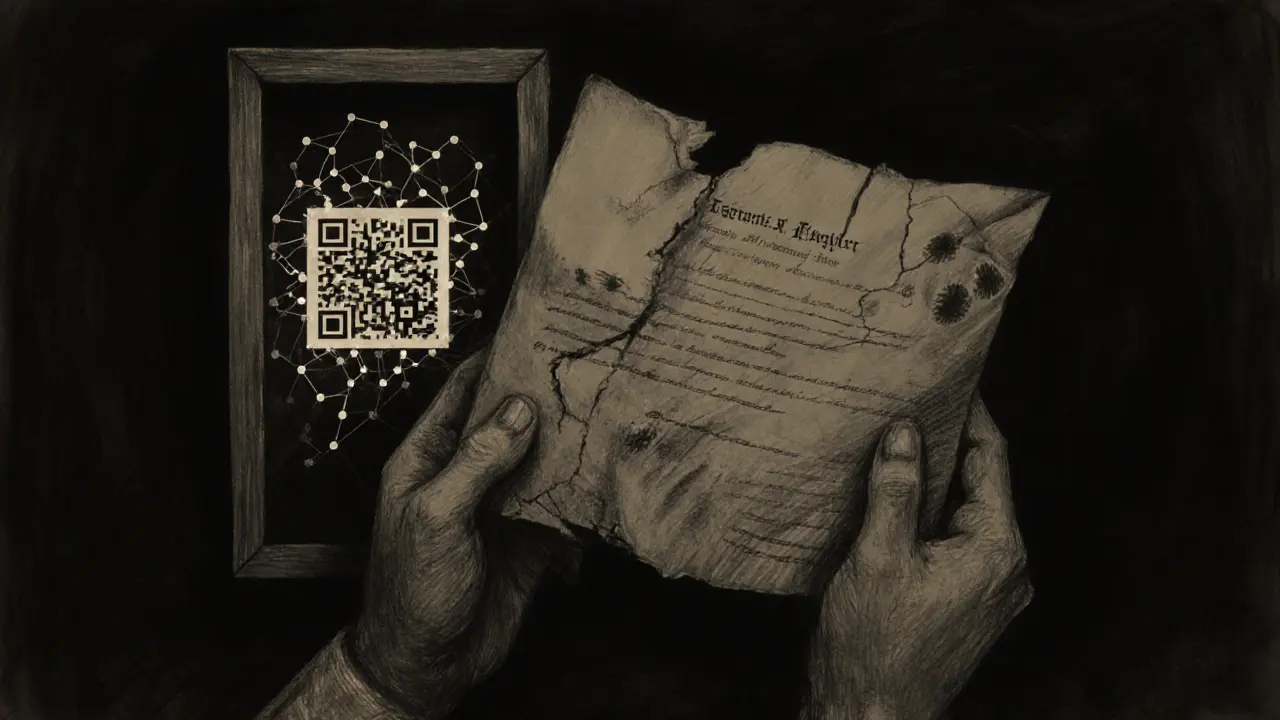Blockchain provenance offers an unchangeable digital record of art ownership, while traditional methods rely on fragile paper documents. Learn how blockchain stops fraud, boosts trust, and gives artists lifelong royalties.
Blockchain Art Provenance: Track Ownership and Authenticity on Chain
When you buy a piece of blockchain art provenance, the permanent, tamper-proof record of who created, owned, and transferred a digital artwork. Also known as digital art lineage, it’s what separates real NFTs from fake copies floating around the internet. Without it, you’re just looking at a screenshot—no matter how pretty it is.
Every time an NFT changes hands, that transaction gets locked into the blockchain. That’s your proof. It doesn’t matter if someone reposts the image on Instagram or sells a print on Etsy—only the one with the correct chain of ownership has the real asset. This isn’t theory. It’s how platforms like OpenSea and Foundation verify authenticity. And it’s why some digital art sells for millions while identical files sit worthless. The difference? Provenance.
But here’s the catch: not all NFTs have clean histories. Some were minted by bots. Others were stolen from artists and relisted. That’s why you need to check the full transaction trail—not just the current owner. Tools like Etherscan let you trace every transfer back to the original mint. If the first owner is a known scam wallet? Run. If the artist’s wallet sold it directly? That’s a good sign. Provenance isn’t just about who owns it now—it’s about how it got there.
Related to this are NFT authenticity and digital art ownership. These aren’t just buzzwords. They’re legal and financial realities. If you can’t prove you own the NFT tied to a specific smart contract, you don’t own the rights. And if the artist never signed off on the mint? You might be holding a counterfeit. That’s why verified collections like CryptoPunks and Bored Apes have such value—they come with clear, public histories.
Then there’s NFT metadata. That’s the hidden data inside the NFT file—artist name, creation date, description, even linked files. If the metadata is broken or missing, the NFT loses most of its value. A lot of cheap NFTs you see? Their metadata points to dead links or placeholder images. Real provenance means the metadata is immutable and hosted on decentralized storage like IPFS, not some random server that could vanish tomorrow.
What you’ll find in the posts below aren’t marketing fluff. They’re real breakdowns of NFT projects, scams, and tools that actually help you verify what’s real. You’ll see how the LGO token faded after its exchange collapsed, how fake airdrops like Moonpot POTS trick people into giving up keys, and why DTN crypto has zero supply but a fake price. These aren’t random stories—they’re lessons in how provenance fails, and how to spot it before you lose money.
You don’t need to be a coder to use blockchain art provenance. You just need to know where to look. And that’s exactly what these guides give you: clear steps, red flags, and real examples. No jargon. No hype. Just what works—and what gets you burned.

